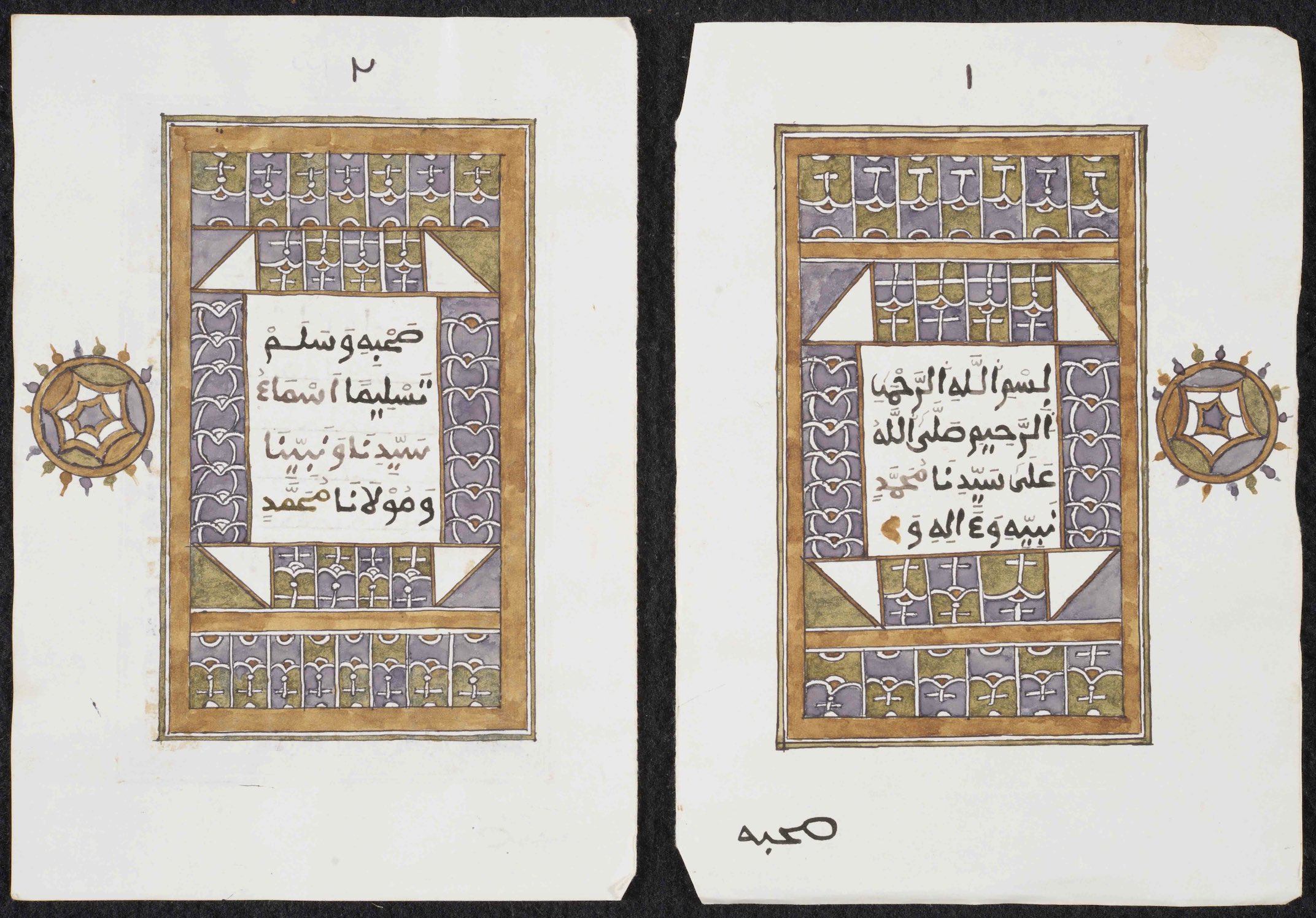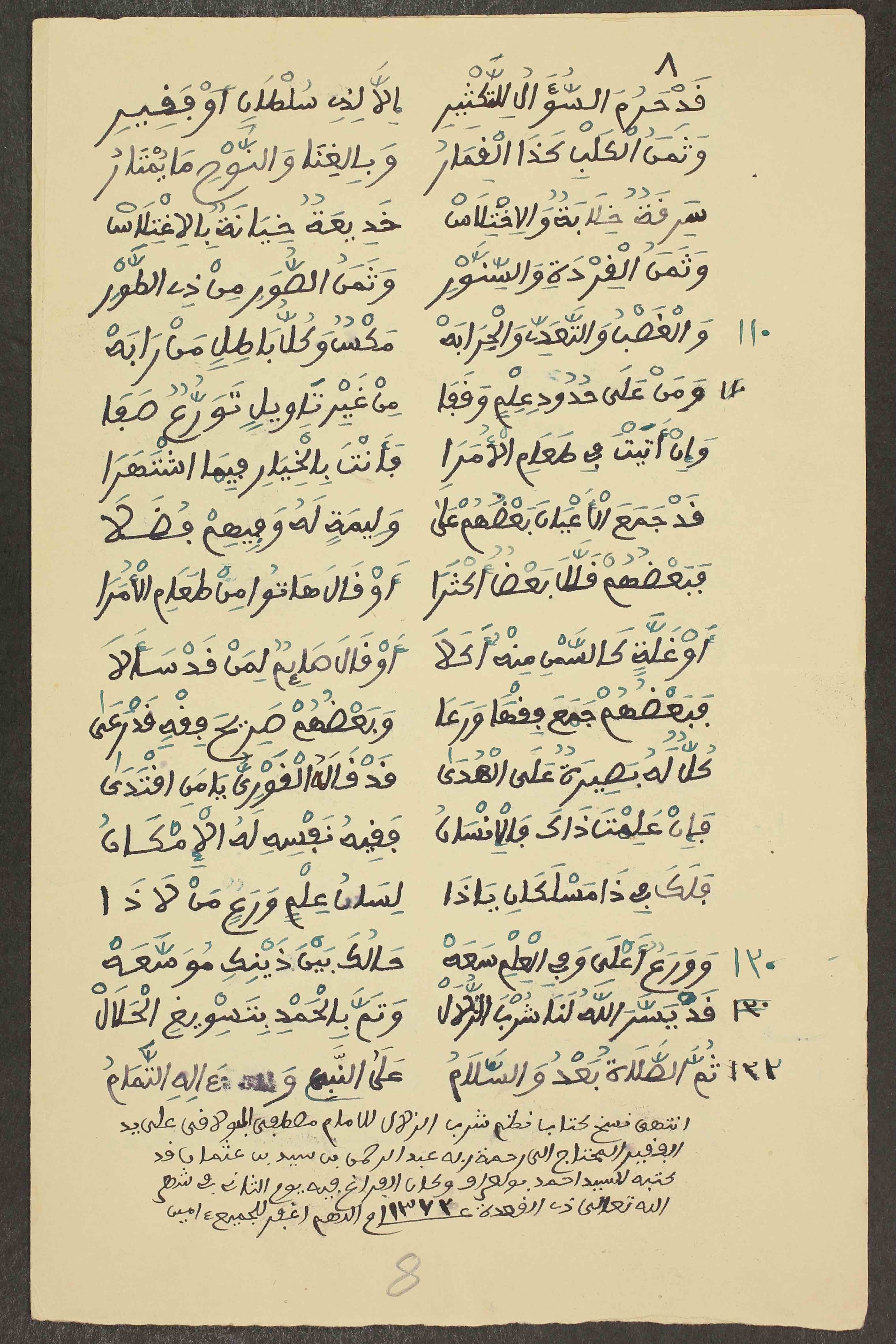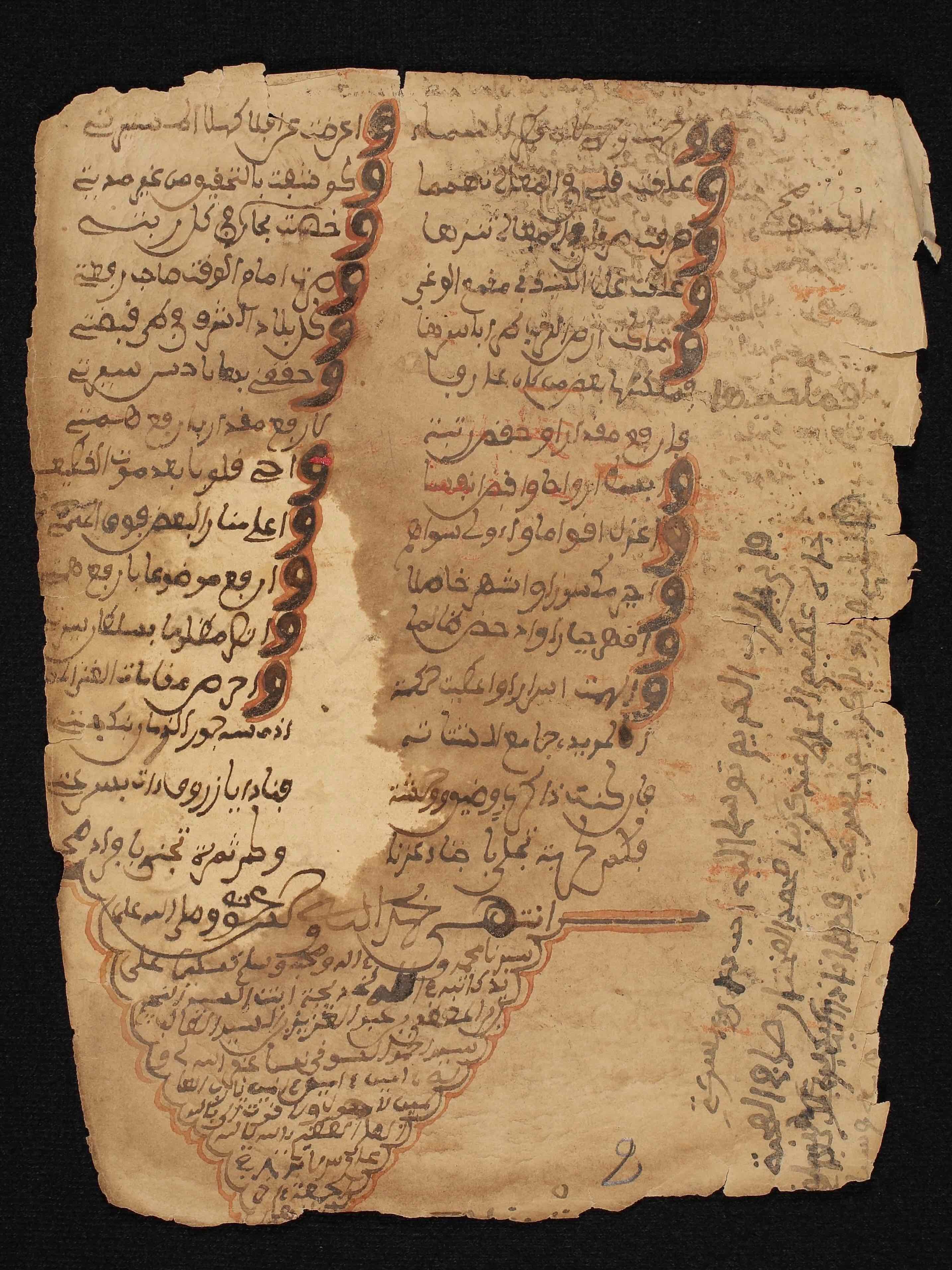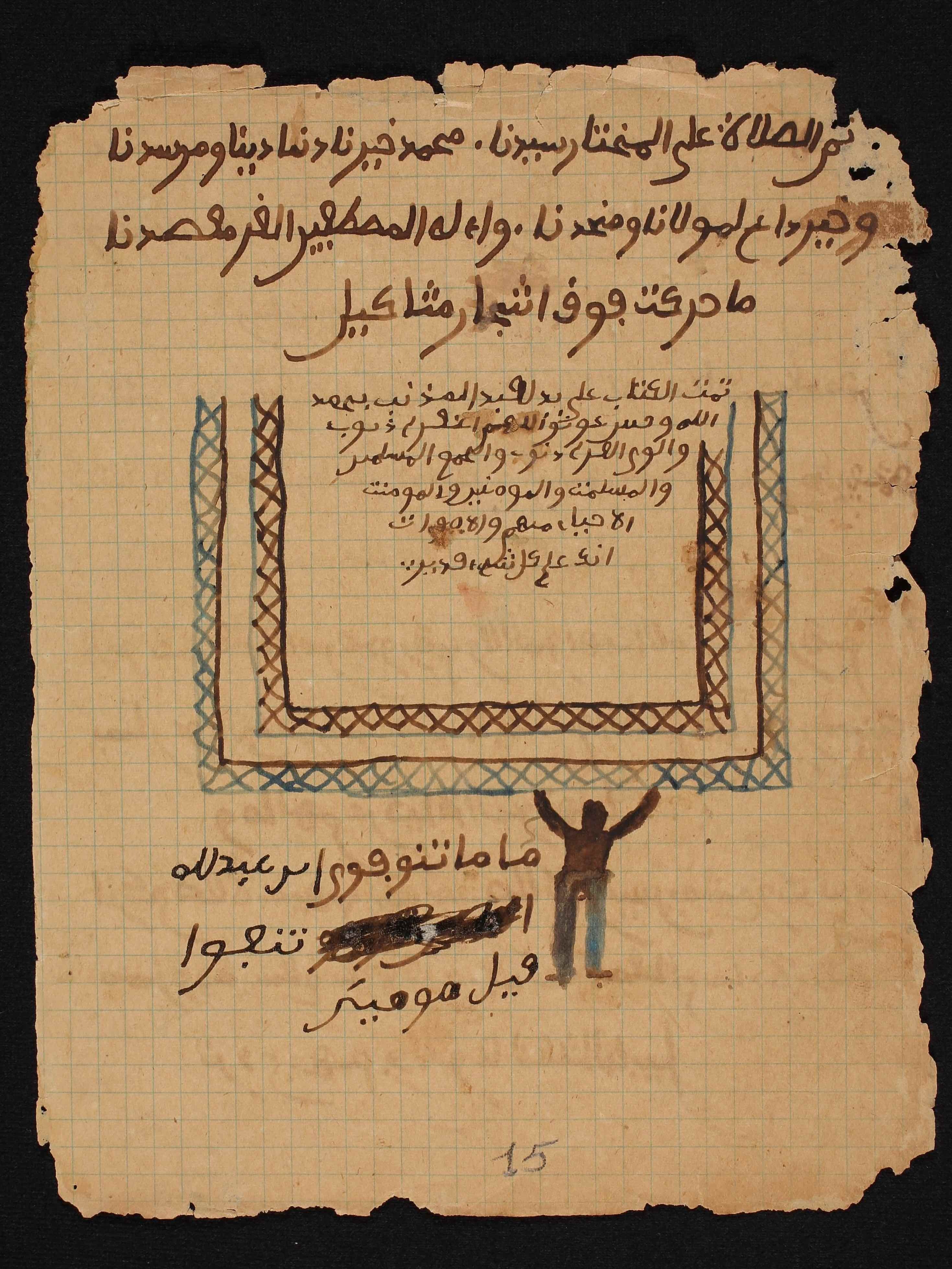A Scribble Of Scribes: Men, Women, And Children Copyists Across Mali’s Manuscript Collections
A Scribble of Scribes: Men, Women, and Children Copyists Across Mali’s Manuscript Collections
This story is part of an ongoing series of editorials in which HMML curators and catalogers examine how specific themes appear across HMML’s digital collections. From the Islamic collection, Dr. Ali Diakite and Dr. Paul Naylor share a story about Scribes.
Aside from the information it contains, each manuscript is an artistic production and requires physical labor performed (usually) by a single individual—the scribe. Replicating manuscript copies—whether the work was done by students, private collectors, or professional copyists/scribes—served a vital role in Timbuktu’s intellectual culture and remains a living tradition in the region today.
This is evident in HMML 00548, a copy of al-Jazūlī’s book of prayers for Prophet Muhammad. HMML’s Executive Director, Fr. Columba Stewart, purchased the text in Djenné, Mali, from professional scribe Alfa ibn Alfa Muhammad Dramé in 2021.

Here we share what we know about the men, women, and young people who played a role in these scribal practices.
Many of Timbuktu’s manuscripts were commissioned to be made by professional copyists, and colophons often include both the name of the copyist and the person they copied it for. These professional scribes charged a copying fee for their labor, and the fee is often recorded at the end of the manuscript. The currency of exchange varied depending on the time and region, but it was probably in measurements of gold or silver (referred to as riyāl) or cowrie shells, which served as a medium of exchange across West Africa until the colonial period.
For example, the copyist of SAV ABS 01191 set a price of five riyāl for his copy of al-Jazūlī’s Dalāʼil al-khayrāt. Evidently, copyists charged depending on the length and quality of text. Al-Ḥājj ibn Muḥammad ibn ʻUthmān ibn Silamaga Maʻāshī charged Amīr Abū Bakr 500 cowries for copying out a 25 page text about the month of Ramadan (SAV BMH 29872). Meanwhile, an illuminated copy of al-Jazūlī’s poem (SAV BMH 17185) was exchanged for 5,000 cowries.
Other scribes copied texts for friends, teachers and relatives, or often for themselves, presumably for no charge. “I copied this for myself and for whoever comes after me” is a note we commonly encounter at the end of manuscripts. Unlike purely commercial copies, these scribes sometimes left notes emphasizing the transitory nature of their own life compared to the text they were copying. This is a common phrase we’ve encountered, left in manuscripts after the completion of a copy:
| The copy remains long after its writer |
And the copyist lies buried under the ground |
| وصاحب الخط تحت الأرض مدفونا | الخط يبقى زمانا بعد كاتبه |
Copyists also denigrated themselves, perhaps to demonstrate their humility. Some common self-denigrations we have found include:
| gluttonous, and fasts little | كثير الأكل قليل الصوم |
| full of sin | كثير الذنوب |
| sleeps often and prays little | كثير النوم قليل الصلاة |
For this same reason, copyists often refused to add their name to their work. Again, this was because they considered copying to be a pious act not meant to showcase their talents or spread their reputation.
Tracing Scribe Families
Conversely, Timbuktu had—and still has today—many famous families of scribes. For example, the descendants of Muḥammad Gordo (محمد كورد), a famous scholar who lived in the Timbuktu region in the 1600s CE. Dozens of copyists across the Timbuktu collections include him in their genealogies. Another is the Alfa Banyá family, who traditionally serve as imams (religious and political leaders) of the Djinguereber Mosque in Timbuktu. Many of the manuscripts in the mosque’s library (Bibliothèque de Manuscrits al-Imam Essayouti) were copied by Alfa Banyá’s descendants.
A more modern example is Aḥmad BulʻArrāf (1864–1955 CE), a trader who settled in Timbuktu in 1904 CE and established a reputation there as a collector, copier, and commissioner of books from across the Muslim world (for more information, see an article by Shamil Jeppie, “A Timbuktu bibliophile between the Mediterranean and the Sahel,” published in The Journal of North African Studies). HMML’s Timbuktu collections include several works that Aḥmad BulʻArrāf commissioned, as well as his own compositions.

During the 20th century, it became more common for copyists to record a family name (before the colonial period, names that were recorded often used only a person’s first name and the first names in their patronymic lineage). In the manuscripts digitized by HMML and our partners in Mali, various family names occur with some frequency in provenance notes—such as Traoré, Konaté, Cissé, Touré and Sumaré. These names are still common today in the Timbuktu region and across Mali. Their frequency in the manuscripts suggests that these families were well known manuscript copyists in the local area.
While the majority of copyists identified by name are male, we do find a significant minority of female copyists and commissioners. For example, Hawá Sylla is noted as the owner of SAV BMH 17264, a creed by Muḥammad al-Awjalī. Meanwhile, Khadījah al-ʻAwfī copied SAV BMH 21046, a collection of poems, written in a flowing hand, decorating portions of the text in red ink.

We also assume that many copyists in the Timbuktu collections are young students. The traditional education system in West Africa involves copying many foundational texts of the Muslim faith. Copies were usually given to the teacher to gain baraka, or blessing, and to demonstrate that the student had mastered the text. In earlier times, students practiced this writing on a wooden writing board (lawḥ). In the 20th century, writing paper became more easily available and much cheaper. Students may have transitioned to this medium instead, thereby also preserving their work. These more recent copyists often record the first names of both their mother and father alongside their own name—could this be a younger student acknowledging mom and dad?
The nature of the copyist’s occupation—and, as we’ve observed, the influence of their temperament, culture, or tradition—is such that we find out only fragments of their identity. Meanwhile, manuscript studies tend to focus on the copied text and its author, not on the person who physically copied it. We think that many copyists would have wanted it this way. But there are always exceptions. In what we’ve seen so far, the copyist with the most personality on-page is one Mama Tanfo, who decided to sketch himself holding up the colophon of SAV BMH 22445.





